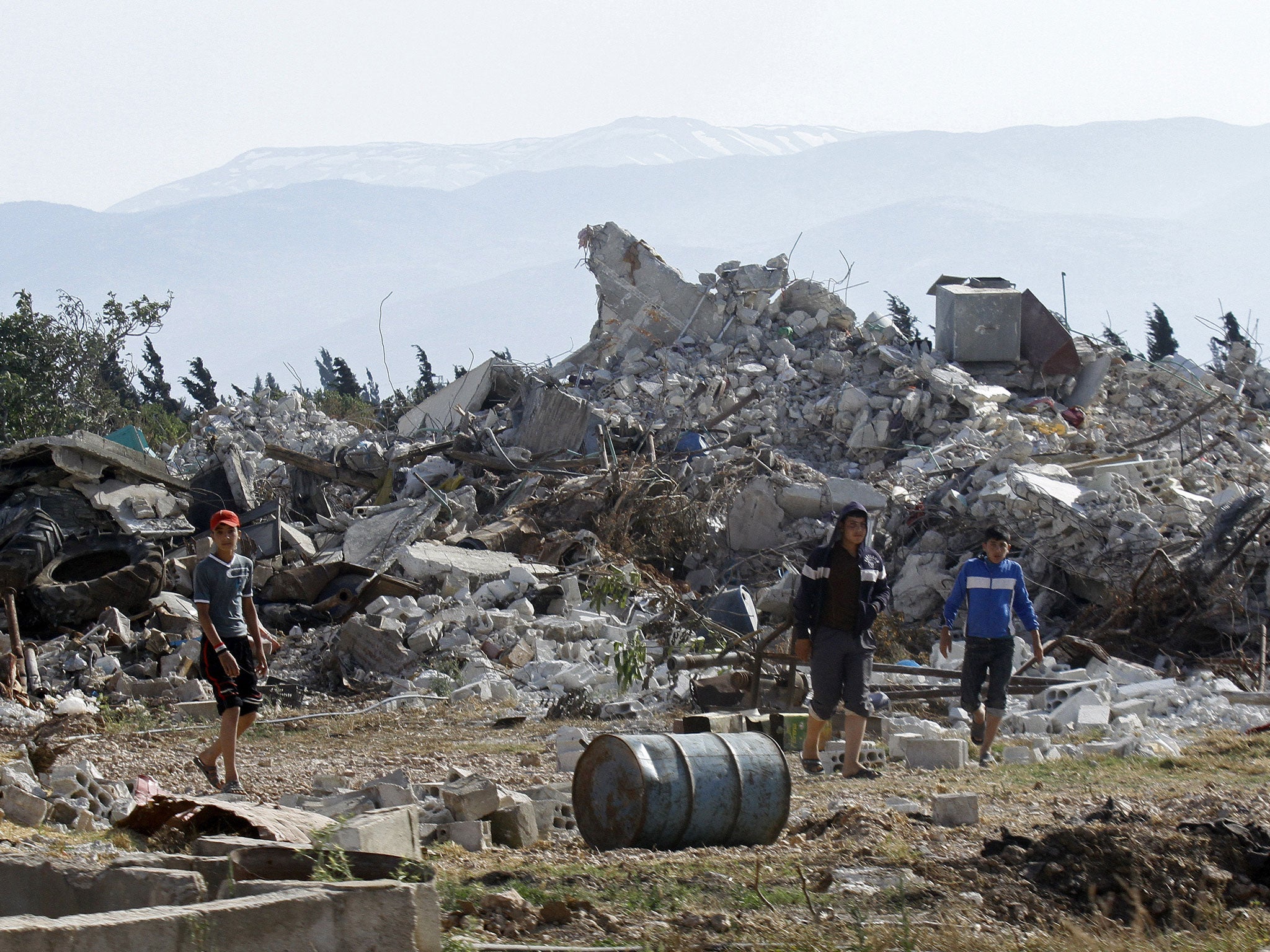From amid the ruins new hope for Syrian rebels
The recapture of Qusayr could be a turning point

As representatives of 11 countries supporting the Syrian rebels met in Qatar over the weekend pledging to supply them with arms, Syrian military officers in the recaptured town of Qusayr expressed confidence that rebels will never be able to retake their old stronghold.
The rebel defeat at Qusayr – south of Homs and close to the Lebanese border – after a two-week assault by government forces earlier this month has had a crucial political impact.
Outside powers realised that President Bashar al-Assad’s overthrow was not as inevitable as they had imagined. The so-called Friends of Syria, which include the US, Britain, France, Saudi Arabia and Qatar, now promise military and other aid to enable the rebels to repel the government offensive.
Qusayr looks firmly under the control of the Syrian army, but the government is taking no chances. On the road to this once prosperous market town, set amid olive and almond trees, there are military checkpoints every few hundred yards, where soldiers carefully examine identity documents.
The debris of battle is all around in the shape of wrecked buildings, burnt orchards, a smashed mosque with its minaret lying on the ground and a burnt-out tank.
The government always held part of Qusayr town and it is only beyond the old front line that all buildings on the main street have been torn apart by shellfire. The old telecommunications building is a spectacular heap of smashed concrete, while the minaret of an another old mosque has a gaping hole in it, though it is still standing. There are almost no civilians about aside from two small boys on bicycles, who seemed cheerfully oblivious to the ruins around them.
Off the main street, the disruption is not quite so bad. People are beginning to trickle back. Qusayr had been surrounded by rich farmland, and had a surprising number of shops. Most of these have been wrecked, their metal screens buckled and twisted by the force of explosions.
We spoke to a young man called Shibli Halaq, who 10 days ago had returned to Qusayr, “where I used to own a perfume shop”. Lack of perfume is not the town’s most pressing shortage, but he seemed confident he would soon be back in business. He said he and his family had left the town 14 months ago, because they did not like the rebel factions. Their place of exile was his grandfather’s house two miles away.
Mr Halaq had come back with his three brothers to clean up their house before their family return. He said, “Fifteen families are back in our street and more will come.”
Looking down side streets it was evident that most civilian houses had escaped damage from shellfire but had been thoroughly looted by one side or the other. Mr Halaq was waiting for the water and electricity to be switched on, which he expected to happen in the next few days.
Ahmed, a young soldier who was our guide, blamed most of the heavy damage on the rebels and said they had planted mines everywhere. A construction worker had been killed by one exploding the previous day.
Could the rebels of the Free Syrian Army return? An army major, who refused to give his name, said, “If we keep control they won’t be able to.”
Some of this was bravado, but the army does seem to have a tight grip on the town. But areas of rebel and government control are very close to one another, and each side is in a position to launch a surprise attack.
We had an example of this later in the day, when I asked to visit a military hospital in the al-Waar district in the northern outskirts of Homs. A car with security men in it that was driving us took a circuitous route out of the city and back “to avoid dangerous roads”.
Crossing a bridge over the motorway to the city of Hama to the north, we saw that it had been closed to traffic by earth embankments, indicating that the rest of the road is under rebel control. There were other barricades sealing off roads going to rebel-held districts. The soldiers on sentry duty looked on edge. When we got to the military hospital, we waited a long time at the gate until we were told that we could not enter “without a permit from military intelligence”.
Despite the government’s success at Qusayr, the military situation around Homs feels like a stalemate. Even in Damascus, where government forces are meant to be advancing, we had to divert off a main road because snipers were shooting at vehicles at a suburb called Harasta. At this spot, snipers had recently shot dead two chicken farmers and a man bringing olive oil to the market.
Dangerous ground
The two-week battle for Qusayr ended on 5 June, when rebels conceded they had been forced from the strategically important town by regime forces. The city’s recapture has been seen as a key victory for President Bashar al-Assad’s forces, because it provided a vital lifeline for rebel factions as a principal transit point for weapons and fighters from neighbouring Lebanon. It is useful to the regime for similar reasons, and is located on the road linking Damascus with regime strongholds on the coast.
Join our commenting forum
Join thought-provoking conversations, follow other Independent readers and see their replies
Comments